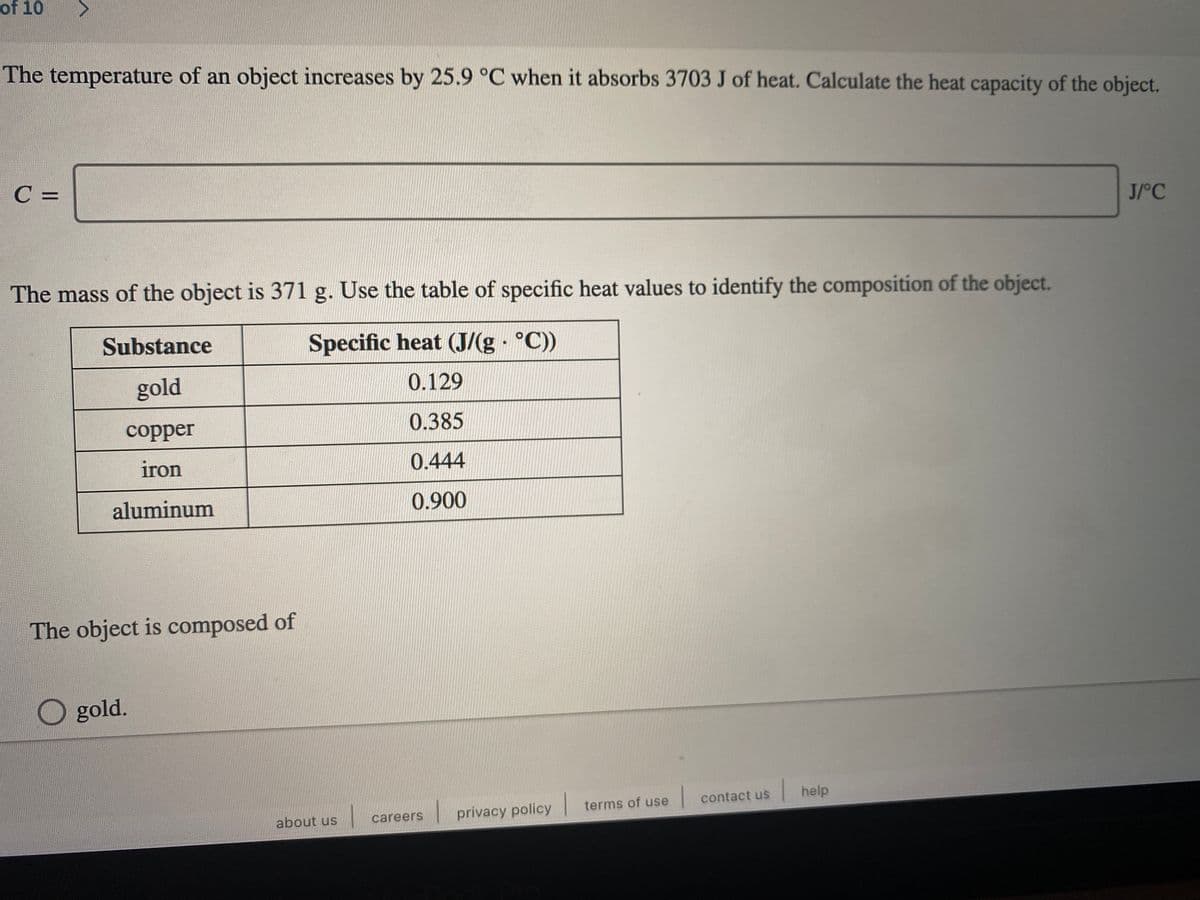The temperature of an object increases by 25.9 °C when it absorbs 3703 J of heat. Calculate the heat capacity of the object. С — J/°C The mass of the object is 371 g. Use the table of specific heat values to identify the composition of the object. Substance Specific heat (J/(g °C)) gold 0.129 сopper 0.385 iron 0.444 aluminum 0.900 The object is composed of gold.
Thermochemistry
Thermochemistry can be considered as a branch of thermodynamics that deals with the connections between warmth, work, and various types of energy, formed because of different synthetic and actual cycles. Thermochemistry describes the energy changes that occur as a result of reactions or chemical changes in a substance.
Exergonic Reaction
The term exergonic is derived from the Greek word in which ‘ergon’ means work and exergonic means ‘work outside’. Exergonic reactions releases work energy. Exergonic reactions are different from exothermic reactions, the one that releases only heat energy during the course of the reaction. So, exothermic reaction is one type of exergonic reaction. Exergonic reaction releases work energy in different forms like heat, light or sound. For example, a glow stick releases light making that an exergonic reaction and not an exothermic reaction since no heat is released. Even endothermic reactions at very high temperature are exergonic.

Given data, heat absorbed=3703 J.
Temperature of object increases by 25.9℃.
We know ,Heat capacity of an object= Heat abosorbed / change in temperature
C= Q/∆T=3703J ÷ 25.9 ℃=142.97 J/℃.
Trending now
This is a popular solution!
Step by step
Solved in 2 steps









